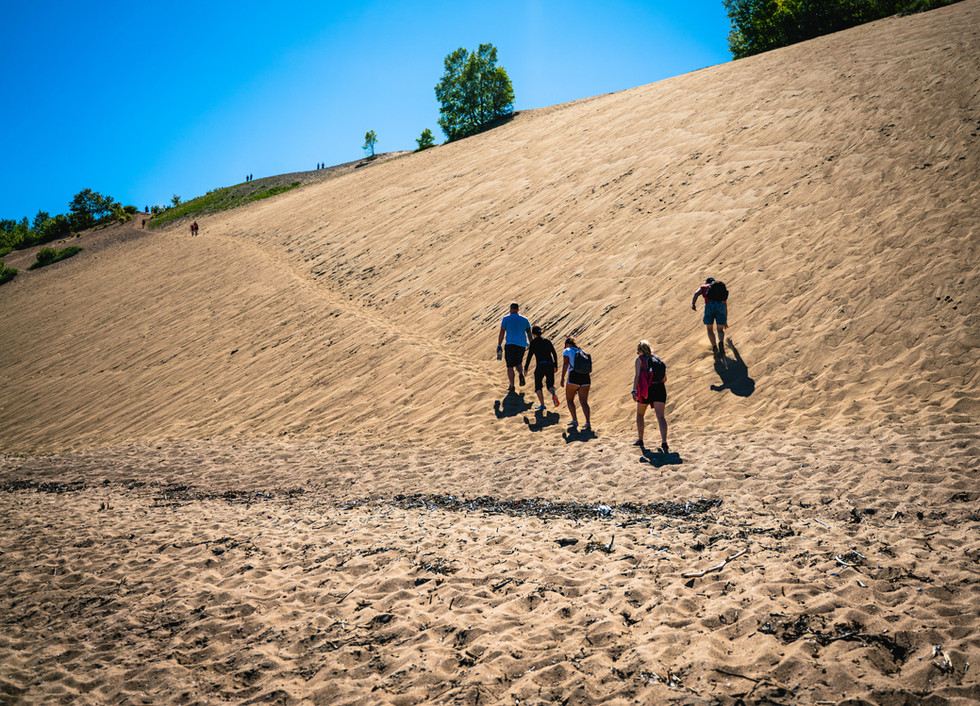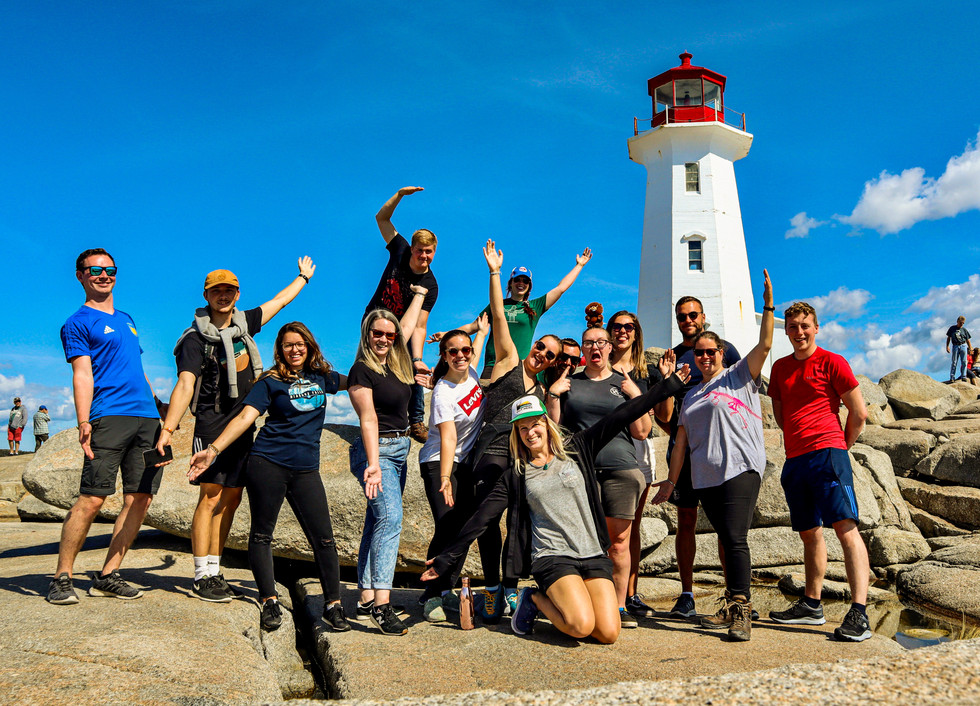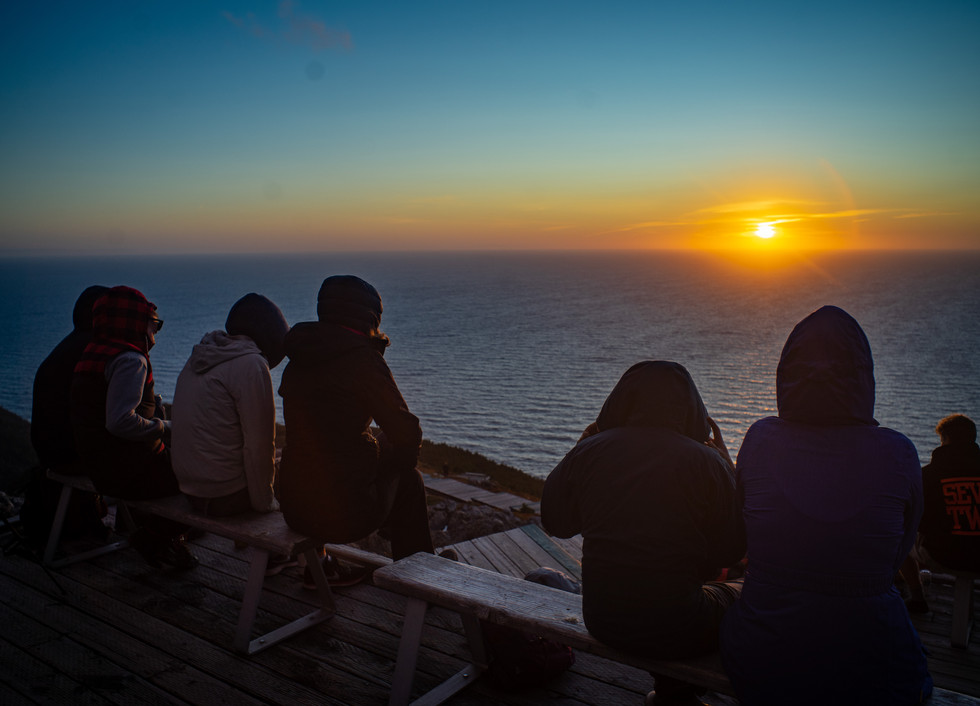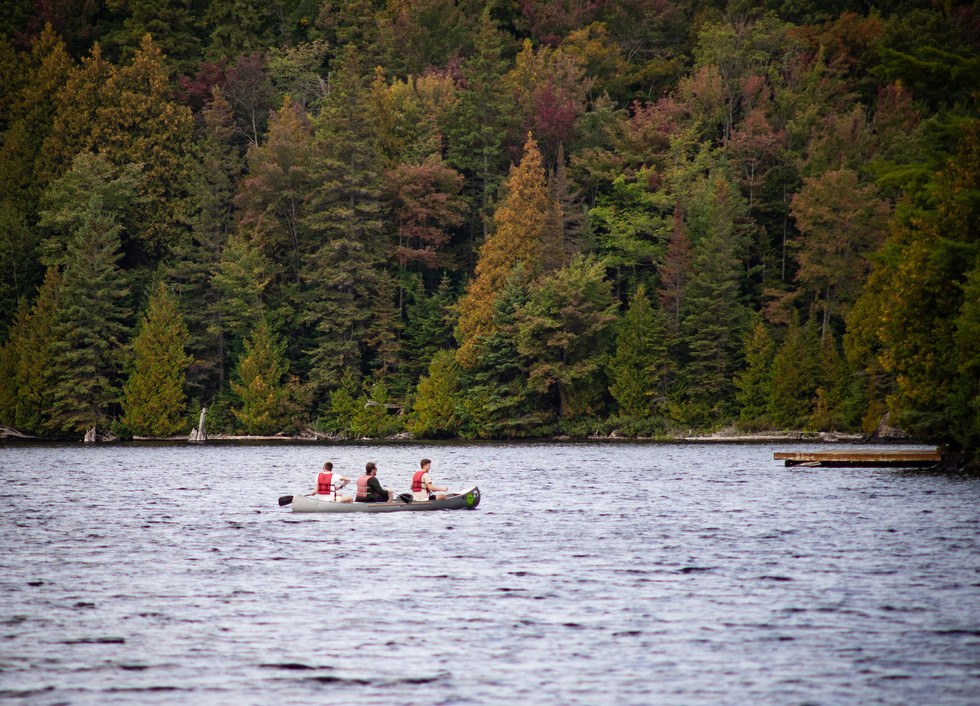Adventure Trip Passes
Our primary summer road tripping route is a wild 26-day adventure that we call the Big One.
We understand that not everyone has that amount of time or budget, so we have organized the trip into a few different sections that are between 13 and 21 days
If you are looking for a short trip, you should check out the separate Quicky trip.
We also an incredible winter adventure, WinterWild!
All prices are in Canadian Dollars (CAD) and include all taxes and fees.
Latest Blog

Adventure Gone Wrong: Navigating a Personal Injury Claim While Travelling in Alberta
The Unforeseen Detour: When Vacation Takes a Painful Turn
Alberta is a playground for adventurers. From the majestic Rockies in Banff and Jasper to the vibrant city life of Calgary and Edmonton, there’s no shortage of amazing experiences. You plan your trip, book your accommodations, and dream of breathtaking views and unforgettable moments. 🏔️ What you don’t plan for is an accident. A slip and fall on an icy sidewalk, a mishap during a guided tour, or a car accident on the way to the mountains can instantly turn your dream vacation into a stressful and painful ordeal. Suddenly, you’re not just a tourist; you’re an injured person in an unfamiliar place, facing medical bills and a confusing legal system. When you’re far from home, figuring out your rights can feel overwhelming, which is why getting guidance from a Personal injury lawyer Edmonton is a critical early move.
The shock and confusion following an accident can be immense, especially when you’re away from your support system. You might be dealing with physical pain, emotional distress, and the logistical headache of changing travel plans and communicating with family back home. On top of all that, the thought of pursuing a personal injury claim seems like an impossible mountain to climb. The good news is, you don’t have to go through it alone. Alberta’s legal system provides protections and avenues for compensation for visitors who are injured due to someone else’s negligence. Understanding that you have options is the first step toward getting the help and support you need to focus on your recovery.
Immediate Steps to Take After an Injury in Alberta
In the moments right after an accident, your priority is your health and safety. Seek medical attention right away, even if you feel your injuries are minor. 🚑 Some injuries, like concussions or soft tissue damage, may not show symptoms immediately. Going to a hospital or walk-in clinic creates an official medical record of your injuries, which is vital for any future claim. Be sure to explain exactly how the injury occurred to the medical staff. If possible, report the incident to the appropriate authority—the property manager if you fell at a hotel, the tour operator, or the police in the case of a traffic accident. Get a copy of any report filed.
Once you’ve addressed your immediate medical needs, try to document everything. Take photos and videos of the scene of the accident, paying close attention to what caused your injury, such as a wet floor without a sign or a broken piece of equipment. If there were any witnesses, ask for their names and contact information. Their account of what happened can be incredibly valuable. Keep a detailed record of all your expenses that result from the injury, including medical bills, prescription costs, taxi fares to appointments, and any costs associated with changing your travel plans. This documentation will form the foundation of your personal injury claim.
The Clock is Ticking: Understanding Alberta’s Statute of Limitations
When you’re injured on vacation, your first instinct might be to wait until you get home to decide what to do. This is a risky approach because of something called the statute of limitations. In Alberta, like in other provinces, there is a strict deadline for filing a lawsuit for a personal injury. Generally, you have two years from the date of the accident to start a legal claim. If you miss this deadline, you will likely lose your right to sue for compensation, no matter how strong your case is. ⏰
Two years might sound like a long time, but the process of gathering evidence, assessing your injuries, and preparing a legal case takes time. For a visitor, the complexities are even greater. You may be dealing with your recovery back in your home province or country, making communication and coordination more difficult. This is why it’s so important to speak with an Alberta-based lawyer as soon as you are able. They can ensure all the necessary paperwork is filed on time, preserving your right to seek the compensation you deserve while you focus on getting better.
Gathering Evidence: Your Role in Building a Strong Case
While your lawyer will handle the legal heavy lifting, the evidence you collect can make or break your case. Think of yourself as the lead detective in your own story. 📸 Your smartphone is your most powerful tool. As mentioned before, take plenty of pictures of the accident scene from various angles. Capture the specific hazard that caused your injury, the surrounding area, any lack of warning signs, and your injuries themselves. These images provide a clear, unbiased record of the conditions at the time of the incident.
Beyond photos, your personal notes are also powerful. As soon as you can, write down everything you remember about the accident. What were you doing? What did you see and hear? What was said immediately after? Also, start a journal to track your recovery. Note your pain levels, your medical appointments, any difficulties you have with daily activities, and the emotional impact the injury is having on your life. This detailed account will help demonstrate the full effect the injury has had on you, which is crucial when determining fair compensation.
Dealing with Insurance Companies: A Tourist’s Guide
Shortly after your accident, you will likely be contacted by an insurance adjuster representing the at-fault party. It’s important to remember that this person is not on your side. Their job is to protect their company’s financial interests, which often means minimizing the amount of money they have to pay out. They might sound friendly and concerned, but they are trained to ask questions that could lead you to downplay your injuries or accidentally accept some of the blame.
It is best to avoid giving a recorded statement or signing any documents from an insurance company without first consulting with your lawyer. A common tactic is to offer a quick, low settlement before the full extent of your injuries and future medical needs are known. While the offer might seem tempting, especially when you’re facing unexpected bills, accepting it will prevent you from seeking any further compensation. Your lawyer can handle all communications with the insurance company, ensuring your rights are protected and that you aren’t pressured into an unfair settlement.
Why a Local Alberta Lawyer is Your Best Ally
You might wonder if you can just use a lawyer from your hometown. While convenient, this is rarely the best choice. Personal injury law is complex and varies between provinces and countries. An Alberta-based lawyer has a deep understanding of the province’s specific laws, precedents, and court procedures. They know the local legal community, including opposing lawyers and judges, which can be a distinct advantage. 🤝
A local lawyer also has a network of Alberta-based resources that can strengthen your case. They can connect you with local medical specialists to properly assess your injuries and provide expert reports for your claim. They understand the nuances of calculating lost income and future care costs within the context of Alberta’s economy and healthcare system. Having a legal professional on the ground in Alberta ensures your claim is handled efficiently and effectively, giving you the best possible chance for a successful outcome.
What Kind of Compensation Can You Expect?
A successful personal injury claim aims to compensate you for the losses you have suffered because of the accident. The goal is to put you back in the financial position you would have been in if the injury had never occurred. Compensation, often called “damages,” is typically broken down into different categories. This includes covering your medical and rehabilitation expenses, such as physiotherapy, medication, and any future treatments you may require.
Compensation also covers financial losses. This includes any income you lost while being unable to work, both during your trip and after you returned home. It can also account for any loss of future earning capacity if your injuries are long-term or permanent. Finally, a claim can include damages for pain and suffering, which is compensation for the physical discomfort and loss of enjoyment of life you have experienced. An experienced lawyer can properly assess all of your losses to ensure you are seeking a settlement that is fair and complete.

The Business of Adventure: Legal Essentials for Starting a Tour Company in Canada
So, you have a passion for Canada’s breathtaking backcountry and want to share it with the world? That’s fantastic! Launching an adventure tour company, whether it’s whale watching on the coast or heli-skiing in the mountains, is an exciting journey. Before you start guiding clients through majestic landscapes, it’s vital to get your legal ducks in a row to build a solid foundation. While we specialize in offshore setups, like offering Malta company registration services, we also know the importance of getting your local structure right from the start.
Setting up your business correctly protects you, your staff, and your customers. Think of it as your initial basecamp preparation; a well-planned setup ensures the entire expedition runs more smoothly and safely. Getting these legal essentials handled early on frees you up to focus on what you do best: creating incredible adventures and lifelong memories for your guests. Let’s get into the key legal checkpoints for your new Canadian tour company. 🗺️
Choosing Your Business Structure: Sole Proprietor, Partnership, or Corporation?
One of the first big decisions is how to structure your business. The simplest form is a sole proprietorship, where you are the business. It’s easy to set up, but it means there’s no legal separation between your personal and business assets. If something goes wrong, your personal belongings could be at risk. This structure might be suitable for a small, low-risk operation to begin with.
A partnership is similar, but with two or more owners. For greater protection, most adventure tour companies opt to incorporate. A corporation is a separate legal entity, which shields your personal assets from business debts and lawsuits. This separation is incredibly valuable in an industry where risk is an inherent part of the product. Incorporation can appear more professional to clients, lenders, and partners. 🇨🇦
Registration and Licensing: Making It Official 📜
Once you’ve picked a structure, you need to register your business name and legal entity. You can register your business federally or provincially. A federal incorporation allows you to operate under the same name across Canada, while a provincial one secures your name only within that province. You’ll also need a Business Number (BN) from the Canada Revenue Agency (CRA) for tax purposes.
Beyond basic business registration, you’ll almost certainly need special licenses or permits. For example, if your tours enter national or provincial parks, you’ll need a permit from Parks Canada or the respective provincial body. Many municipalities also require a general business license to operate within their jurisdiction. Check with your local and provincial authorities to see exactly what paperwork your type of tour requires.
Insurance: Your Safety Net in the Great Outdoors
Insurance is non-negotiable for an adventure tour company. A standard business policy won’t cut it; you need coverage designed for the tourism and recreation sector. The cornerstone of your policy will be Commercial General Liability (CGL) insurance. This covers you in case of injury to a third party (like a client) or property damage that occurs during your operations.
The amount of CGL you need will depend on the risk level of your activities—kayaking on a calm lake requires less coverage than backcountry skiing. You might also consider property insurance for your gear (think kayaks, bikes, or climbing equipment), commercial auto insurance for tour vehicles, and business interruption insurance. Speak with a broker who specializes in the adventure tourism industry to get the right coverage. 🛡️
Liability Waivers: Clear Communication is Key
A well-drafted liability waiver is a critical tool for managing risk. This document informs your guests of the inherent dangers of the activity and, when signed, shows they acknowledge and accept those risks. It is not a magical document that absolves you of all responsibility—you still have a duty of care to your clients and must not be negligent—but it is a vital piece of your risk management strategy.
Your waiver must be written in clear, plain language that is easy for the average person to understand. Avoid overly technical legal jargon. It should be presented to clients with enough time for them to read and consider it before the activity begins. It’s always best practice to have a lawyer with experience in recreation law draft or review your waiver to ensure it is enforceable in your province.
Contracts and Agreements: Working with Guides and Suppliers
Your business will rely on relationships with other people, from freelance guides to equipment rental shops and local lodges. Don’t rely on verbal agreements or handshakes. Formal contracts protect everyone involved by clearly outlining expectations, responsibilities, payment terms, and cancellation policies. A solid contract prevents misunderstandings down the road. 🤝
For staff and guides, your contract should define their employment status (employee or independent contractor), job duties, compensation, and confidentiality clauses. For suppliers, the agreement should detail the services or goods being provided, costs, delivery dates, and what happens if one party fails to meet their obligations. These documents are fundamental to professional and scalable operations.
Provincial Regulations: Know Your Local Rules
Canada’s provinces and territories have their own rules governing the tourism sector. What’s required in British Columbia might be different from the rules in Quebec or Alberta. For example, some provinces have specific governing bodies, like Consumer Protection BC, that license and regulate travel agencies and tour operators. These organizations often have requirements about financial security and transparent advertising.
Take the time to look into the provincial legislation that applies to your specific location and tour type. This could include regulations around transportation, food handling if you provide meals, or certifications required for guides. Connecting with your regional or provincial tourism association is a great way to get information on the local rules of the game.
Protecting Your Brand: Trademarks and Intellectual Property
You’ve worked hard to come up with a catchy company name and a cool logo. Now you need to protect it! Your brand is one of your most valuable assets. Registering your business name does not automatically give you trademark rights. A trademark gives you the exclusive right to use that name, logo, or slogan in connection with your services across Canada.
Officially registering your trademark prevents other companies from using a similar brand that could confuse customers and dilute your brand’s reputation. Think of it as putting a fence around your intellectual property. This step helps build brand recognition and value as your tour company grows, ensuring your unique identity remains yours and yours alone.

More Than a Visit: Why Tourists Fall in Love and Decide to Move to Edmonton
The Unexpected Charm: First Impressions That Stick
Many first-time visitors to Edmonton expect a quiet prairie city, but what they find is a vibrant, bustling metropolis with a heart of gold. The friendly greetings from strangers, the clean streets, and the palpable sense of community often catch people off guard, planting a seed of ‘what if I lived here?’ that’s hard to ignore. It’s this genuine warmth that makes browsing for keswick homes for sale feel less like a dream and more like a plan.
Beyond the initial friendly welcome, Edmonton’s unique character shines through. It’s a city of contrasts, where the sheer scale of West Edmonton Mall exists alongside cozy, independent coffee shops and artisanal markets. This blend of big-city amenities and small-town feel creates a comfortable and exciting environment, making visitors feel right at home from day one.
A Festival City for All Seasons 🎉
Edmonton proudly wears its “Festival City” nickname, and for good reason! The city’s calendar is packed with events year-round, meaning there’s always something to celebrate. From the legendary Fringe Festival and the sweet sounds of the Folk Music Festival in the summer to the enchanting ice sculptures at the Silver Skate Festival in the winter, the city buzzes with creative energy.
These festivals aren’t just for entertainment; they are the lifeblood of the community. They bring people together from all walks of life to share experiences, art, and food. This constant celebration of culture and community is infectious and shows visitors that life in Edmonton is anything but dull.
The Breathtaking River Valley: An Urban Oasis
Imagine North America’s largest stretch of urban parkland right on your doorstep. That’s the North Saskatchewan River Valley for you. It’s a stunning natural escape that winds through the heart of the city, offering a peaceful retreat just minutes from downtown.
For visitors who become residents, the river valley becomes their personal playground. It’s a place for weekend bike rides, morning jogs, peaceful picnics, and even cross-country skiing in the winter. This incredible access to nature within an urban setting is a massive draw for those seeking a balanced, active lifestyle.
Affordable Living and a Thriving Job Market
Let’s talk numbers, because they matter. Compared to other major Canadian cities like Vancouver or Toronto, Edmonton offers a much more approachable cost of living. Housing, in particular, is more attainable, allowing people to own a home and build equity without feeling financially squeezed.
A lower cost of living is even better when paired with a strong job market. Edmonton’s economy is robust and varied, with opportunities in tech, health care, education, and the trades. This economic stability gives newcomers confidence that they can build a career and a prosperous life here.
A Foodie Scene That Surprises and Delights 🌮
Prepare your taste buds for a pleasant surprise! Edmonton’s culinary scene has exploded in recent years, becoming a true foodie destination. From authentic international cuisine found in vibrant neighborhoods to innovative farm-to-table restaurants, there’s a flavor for every palate.
What makes the food here special is the emphasis on local ingredients and community. Farmers’ markets are a staple, and chefs take pride in showcasing Alberta’s bounty. This creates a dining experience that feels both sophisticated and genuinely connected to the region.
Welcoming Communities and a Friendly Vibe
Edmonton is a city of neighborhoods, each with its own unique personality. Whether you’re drawn to the historic charm of Old Strathcona, the modern family appeal of Keswick, or the trendy vibe of 124th Street, there’s a community waiting to welcome you.
Beyond the beautiful streets and parks, it’s the people who truly make Edmonton a place to call home. There’s a down-to-earth, collaborative spirit here. People are quick to offer a helping hand or a friendly chat, making it easy for newcomers to build connections and feel like they belong.
Building a Future: Education and Family Life
For those thinking about the future, Edmonton provides a solid foundation. The city is home to excellent educational institutions, including the world-renowned University of Alberta. From top-tier elementary schools to post-secondary options, there are great learning paths for every stage of life.
With its abundance of parks, family-focused festivals, and safe neighborhoods, Edmonton is an incredible place to raise a family. It offers the perfect mix of opportunities and recreation, ensuring a high quality of life for both parents and children. It’s a city where you don’t just live; you grow.

Capture the Beauty of Canada: How to Edit Your Adventure Travel Photos Like a Pro
So, you’ve returned from a trip across the stunning expanse of Canada, your camera roll filled with majestic mountains, turquoise lakes, and serene forests. But when you look at the photos on your computer, they don’t quite have the same magic as the real thing. Don’t worry, that’s completely normal! A little post-processing is the secret ingredient that turns a good photo into a great one, and using high-quality presets for lightroom can give you an amazing head start.
This guide will walk you through the essential steps to make your Canadian travel photos pop. We’ll cover everything from picking the right software to mastering color and adding those professional final touches. Get ready to transform your images and do justice to those incredible Canadian views. 🍁
Choosing Your Editing Playground 💻
The first step on your photo editing journey is selecting the right software. For most photographers, Adobe Lightroom is the go-to choice. It’s a powerful tool for organizing thousands of photos and offers a comprehensive set of editing controls that are intuitive for both beginners and seasoned pros. Its non-destructive editing means your original files are always safe.
If Lightroom isn’t for you, there are other great options available. Adobe Photoshop offers unparalleled control for detailed retouching, while free alternatives like GIMP or Darktable provide robust features without a subscription fee. The key is to pick one program and become comfortable with its layout and tools. Consistency is your friend here!
The Magic of One-Click Edits: Using Presets
Think of presets as a recipe for your photo’s look. They are pre-saved settings that you can apply to an image with a single click, instantly changing its color, tone, and mood. This is a massive time-saver, especially when you have hundreds of photos from your trip to Banff or the Cabot Trail.
Presets are also an incredible learning tool. By applying one and then looking at the sliders, you can see exactly how a certain look was achieved. You can find collections designed for moody Pacific Northwest forests, bright alpine scenes, or urban cityscapes, giving you a consistent aesthetic across your entire travel album.
Mastering the Basics: Exposure and Contrast
Exposure is the most fundamental adjustment, controlling the overall brightness or darkness of your photograph. The goal is to have a well-balanced image without losing detail in the brightest parts (highlights) or the darkest parts (shadows). Keep an eye on the histogram, a graph that shows the tonal range, to guide your adjustments and avoid pure white or pure black areas.
Contrast is what gives your photo depth and punch. Increasing contrast makes the brights brighter and the darks darker, adding a sense of dimension. You can use the main contrast slider for a global adjustment or fine-tune with the highlights, shadows, whites, and blacks sliders for more precise control over your image’s dynamic range.
Painting with Color: Saturation and Vibrance
Bringing out the colors of Canada is one of the most fun parts of editing. The two main tools for this are vibrance and saturation. Saturation boosts every color in your photo equally, which can sometimes look unnatural or make skin tones appear orange. Vibrance is a smarter tool; it increases the intensity of more muted colors while leaving already saturated colors alone, resulting in a more pleasing and natural boost.
For pinpoint color control, the HSL (Hue, Saturation, Luminance) panel is your best friend. This panel lets you adjust each color channel individually. Want to make the glacial blues of Lake Louise even more striking? Just target the blue channel. Need to tone down the intense greens of a Vancouver Island rainforest? The green channel has you covered. It’s like having a digital paintbrush for your photos. 🎨
Sharpening and Clarity for That Crisp Look
A sharp photo feels professional and clean. When applying sharpening, always view your image at 100% magnification to accurately judge the effect. A great technique is to use the masking feature, which allows you to apply sharpening only to the edges and details in your photo, leaving smooth areas like skies or water untouched for a cleaner result.
The clarity and texture sliders add another layer of definition. Clarity increases contrast in the mid-tones, which is perfect for bringing out the ruggedness of the Rocky Mountains or the texture of old-growth trees. Texture affects smaller details, giving a more subtle effect. Be gentle with these sliders, as pushing them too far can create an overly processed and halo-heavy appearance.
The Art of the Crop and Composition
Your composition can make or break a photograph. The crop tool is invaluable for refining your framing after the shot. Use it to straighten a crooked horizon line—a simple fix that immediately improves a picture. You can also apply compositional guides like the rule of thirds to place your subject off-center for a more balanced and interesting image.
Beyond straightening and re-framing, cropping is excellent for removing distracting elements on the periphery. Maybe there’s an unwanted signpost or a tourist’s elbow at the edge of your frame. Cropping them out directs the viewer’s eye right where you want it: on the spectacular Canadian scenery you set out to capture.
Final Touches: Vignettes and Spot Removal
A vignette is a subtle darkening or lightening of the edges of your photo, which helps to draw the viewer’s attention toward the center. A gentle, dark vignette can add a sense of mood and focus, particularly for a central subject like a lone pine tree or a distant mountain peak. The key is subtlety; you want it to be felt, not seen.
The last step before you export is a final clean-up. Use the spot removal tool to zap away any minor blemishes. This could be dust spots from your camera’s sensor (which show up in clear skies), a small piece of litter on the ground, or even a distracting person in the distant background. This final polish is what separates an amateur snapshot from a professional-looking piece of art.
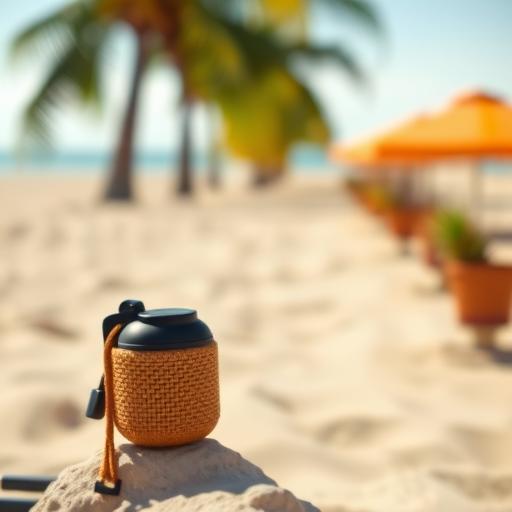
Fund Your Great Canadian Adventure: How a Fast Home Sale Can Make Your Travel Dreams a Reality
From “For Sale” to “First Class” to the Rockies 
Imagine breathing in the crisp mountain air in Banff, watching whales breach off the coast of Vancouver Island, or soaking in the vibrant culture of Montreal. These Canadian dreams often feel distant, blocked by one major hurdle: funding. If your capital is tied up in your property, waiting months for a traditional sale can put your plans on hold indefinitely, but there is another way to sell my house fast Washington and get on the road sooner.
A speedy home sale can be the catalyst that turns your travel fantasies into a concrete itinerary. Instead of watching another season pass by, you could be packing your bags. Accessing your home’s equity quickly provides the immediate cash flow needed to book flights, reserve that charming lakeside cabin, and finally say “yes” to the adventure you’ve been putting off for years.
Why the Traditional Real Estate Market Can Delay Your Trip
Putting your house on the open market often involves a long and unpredictable timeline. First, you have to prepare the home, which can take weeks. Then come the showings, the open houses, the back-and-forth of negotiations, and the suspense of waiting for a potential buyer to secure financing. Each step introduces potential delays that can push your closing date back by months.
This drawn-out process creates a lot of uncertainty. You can’t confidently book your dream trip when you don’t know exactly when—or if—your house will sell. Missing the beautiful autumn colors in the Maritimes or the perfect summer hiking weather in Jasper because of a stalled real estate deal is a frustrating experience you can absolutely avoid.
The Cash Home Buyer Advantage: Speed and Certainty 
Cash home buying companies offer a refreshingly direct approach. They are prepared to make you a fair cash offer shortly after assessing your property, sometimes within 24 hours. The best part? The closing process is incredibly fast. Without the need for bank loan approvals, you could close the sale and have cash in hand in just a few weeks, not months.
This method provides something the conventional market can’t always guarantee: certainty. A cash offer is a sure thing. There are no last-minute hiccups with buyer financing falling through or appraisals coming in low. It’s a clean, straightforward transaction that gives you a definite closing date and a fixed amount of money, empowering you to move forward with your travel plans without any second-guessing.
Unlocking Your Home’s Equity for Epic Experiences
For most homeowners, the largest portion of their personal wealth is their home equity—the difference between what your home is worth and what you owe on your mortgage. While it looks great on paper, this value isn’t accessible for big expenses like a cross-country adventure. It’s locked away in the bricks and mortar of your house.
A fast cash sale is like finding the key to that locked value. It converts your on-paper equity into real, spendable cash. That money can become your dedicated travel fund, covering everything from a scenic train journey through the Canadian Rockies to sampling poutine and maple taffy at a Quebec City winter carnival. Your home’s value can directly fuel your experiences.
Skip the Stress of Repairs and Renovations 
Preparing a house for the traditional market often means a long and expensive to-do list of repairs, deep cleaning, and cosmetic updates to appeal to picky buyers. You might spend thousands of dollars and countless weekends fixing leaky faucets, repainting walls, or landscaping the yard, all before you even list the property.
Many cash buyers purchase properties “as-is.” This simple term is a massive relief for sellers. It means you don’t have to fix anything. You can sell your house in its current condition, saving you a great deal of money and time. Instead of managing contractors, you can spend your time mapping out your route from Toronto to Tofino.
Planning Your Canadian Itinerary with Confidence
One of the biggest benefits of a quick, guaranteed sale is the ability to plan with total confidence. When you know the exact date you’ll receive your funds and precisely how much money you’ll have, budgeting for your Canadian getaway becomes simple and stress-free. There are no more “what ifs” clouding your preparations.
This financial certainty allows you to take advantage of early booking discounts on flights and accommodations. You can secure your spot on a popular tour or purchase tickets for a festival without the nagging worry that your home sale might collapse. This peace of mind is invaluable, letting you focus on the fun part: planning the trip of a lifetime!
Your Adventure Awaits: Making the Move 
The path to funding your great Canadian adventure might be much shorter and simpler than you thought. A fast, “as-is” home sale with a cash buyer removes the typical obstacles of time, uncertainty, and pre-sale expenses. It provides the speed and cash you need to stop dreaming and start doing.
Your property has served you well as a home, and now it can serve as the launchpad for your next great chapter. Let its value open the door to exploring the majestic beauty, friendly cities, and wide-open spaces of Canada. The open road is calling your name!












